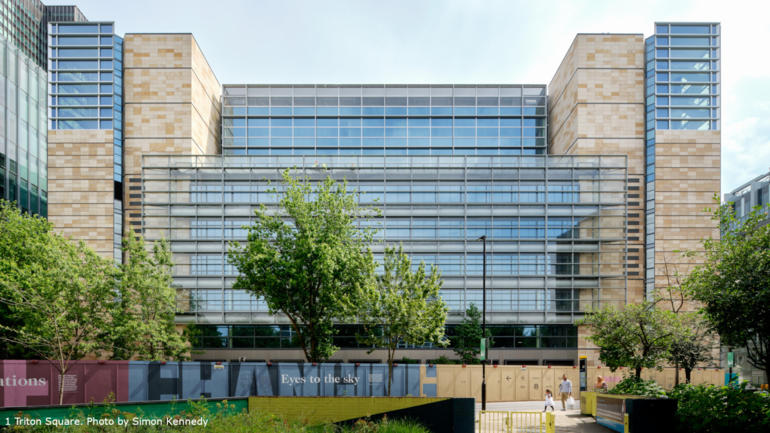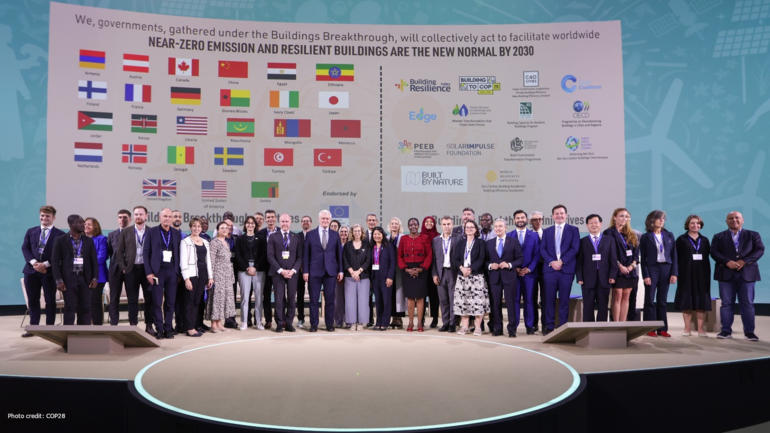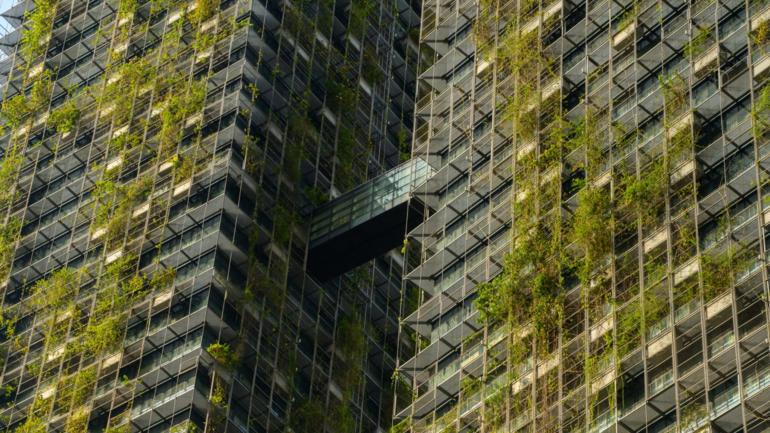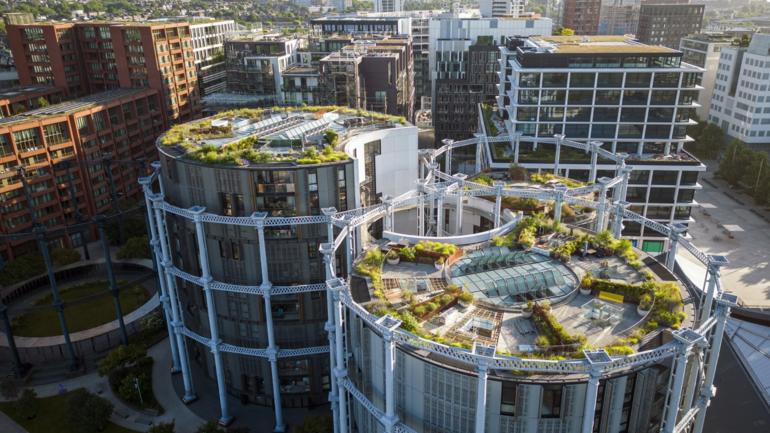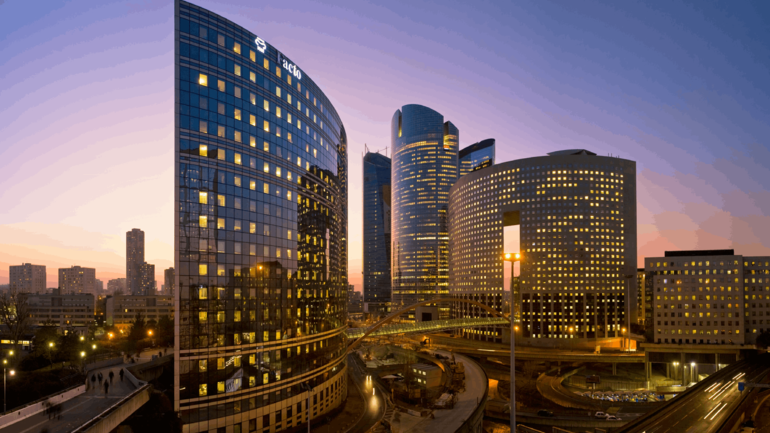Geneva, 9 July 2020 – The World Business Council for Sustainable Development (WBCSD), together with member companies Acciona, Arcadis, ArcelorMittal, Arup, CRH, Guidehouse, LafargeHolcim, Mahindra Lifespaces, Majid al Futtaim, New World Development, Saint-Gobain and Skanska, have developed a new framework for aligning all actors of the built environment around a common language for carbon emissions. The Building System Carbon Framework is targeted at companies involved in manufacturing, designing, constructing, investing, owning, operating, occupying, renovating and demolishing buildings.
In the midst of a global pandemic which has impacted people and business around the world, this Framework ambitions to be a tool for business to help build back better: indeed, it supports an industry transition to net-zero emissions and the construction of zero-carbon buildings.
Companies need to pair COVID-19 recovery plans with climate action, and to meet the Paris Agreement and limit global warming to 1.5°C, it is essential to decarbonize our economy completely by 2050. For the built environment, this means reaching net-zero emissions across all activities in the building and construction system. However, the challenge is significant. The built environment is currently responsible for almost 40% of the global energy and process-related CO2 emissions and to achieve net zero, companies must collaborate.
The Building System Carbon Framework facilitates cooperation within the diverse and fragmented building and construction system, using a common metric and a full life-cycle approach. It is neutral on materials and solutions and bridges embodied and operational carbon, which is a vital prerequisite for the decarbonization of the built environment.
The new Framework is designed to be a user-friendly reporting tool that provides a clear overview of the carbon emissions in the building and construction system. By simplifying the reporting structure, it enables reflections and opportunities for dialogue between stakeholders and allows them to identify the best emissions-reduction strategies for all parts of the value chain.
This Framework has been developed as part of WBCSD’s Transforming the Built Environment project and will form the base for future work within the Decarbonization workstream. As a first next step, the Building System Carbon Framework will be applied in case studies conducted in collaboration with project members. We invite new members and partners to join us in this venture.
“This Framework provides a common language for all companies in the building and construction sector on how they can align their actions to reduce carbon emissions. Importantly, it helps those actors with the most influence over emissions from buildings, such as construction companies, real estate developers, investors, architects, owners and tenants, to engage in a dialogue with other actors in the system on how to reduce emissions from buildings over their full life-cycle, towards the common goal of a net zero built environment” said Roland Hunziker – Director, Sustainable Buildings & Cities, WBCSD.
“With this vibrant community of contributors, we taking the next steps to create a carbon neutral built environment, that is great! The Building System Carbon Framework is a foundation to make the operational phase of our buildings (nearly) energy and carbon neutral. The Framework addresses the dialogue that is needed between stakeholders to reach a Paris Agreement-proof built environment. It helps Arcadis and our peers to rethink our design methods, tools and working codes, and therewith provides insight in making the right decisions in our design and construction methods. And maybe more important, it stresses the need of speaking the same language across the building system. Making our (new) buildings carbon neutral is quite easy. Our next challenge is to make our materials carbon neutral, and this we need to do together” said Niels van Geenhuizen – Global Sustainable Solutions Leader, Arcadis
“Understanding the climate impact of a corporate value chain is complex. Even more complex when this value chain is linked with the construction sector. Many parties are involved, all contributing to the final building. The Framework builds on previous sector initiatives and helps to understand the value chain, helps to create a common language and helps to set Science-Based Targets for the construction sector. As sustainability solutions provider, Guidehouse is welcoming this framework to supporting construction related companies in setting Science-based Targets” said Jeroen Scheepmaker - Associate Director & Lead Science-Based Targets, Guidehouse.
“We are a leader in low-carbon and circular construction to enable sustainable living worldwide and are working on a number of critical areas along the entire value chain of the building material industry with ambitious science-based targets. Integrating this Carbon Framework in the construction value chain will be important in order to have a common measurement and language for shaping net-zero carbon buildings. The collaboration across the entire construction sector, such as real estate developers, investors, architects, and contractors is crucial to live up to low carbon construction” said Magali Anderson - Chief Sustainability Officer, LafargeHolcim.
“Over the next 40 years there will be 230 billion square meters of new construction worldwide. As a result, the energy demand in buildings is expected to increase by 50% by 2050. 70% of the buildings required to serve Indians by 2030 are yet to be built. This presents us with an opportunity to embrace the low carbon pathway. The real estate value chain is complex and explaining the opportunities to reduce emissions is difficult due to lack of a common language for carbon. The Building System Carbon Framework helps in simplifying a complex system. For Mahindra Lifespaces, this Framework provides enhanced clarity for engaging both internal and external stakeholders. This helps in overcoming barriers in understanding, thereby setting the tone for action and collaboration” said Dr Sunita Purushottam - Head of Sustainability, Mahindra Lifespaces.
“Manufacturers of materials and equipment can contribute to mitigating the emissions in two ways: by reducing the carbon footprint of the manufacturing process, and by providing innovative materials and solutions allowing for less use of materials and more efficient performance. Saint-Gobain is committed to leading the building system to achieve a net zero built environment along its entire lifecycle by 2050 at the latest. For this reason, the work of WBCSD and this Buildings System Carbon Framework enables all players of the system to demonstrate roles, responsibilities as well as opportunities to reduce the carbon emission of the system. This Framework provides an important base to develop scenarios, trajectories and business cases for reaching a more sustainable built environment” said Emmanuel Normant - Chief Sustainability Officer, Saint-Gobain
“It is important to see the potential of the full life cycle perspective when assessing how to reduce carbon emissions of buildings - from the raw material, construction and operation to demolition. There is a breakthrough in how the value chain is described in The Building System Carbon Framework – where the financial aspects are integrated with the technical ones. What we want to highlight in the Framework is the importance of including the financial perspective and funding as an essential part of the value chain. This is key to speed up the transition towards a net zero carbon economy” said Lena Hök - Senior Vice President Sustainability, Skanska.
For more information, please contact Luca De Giovanetti



